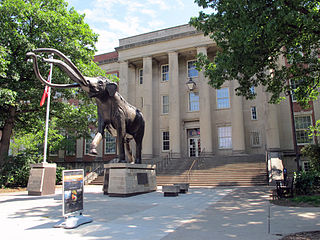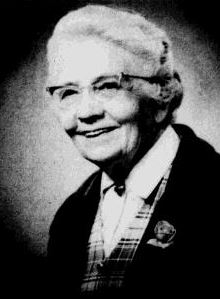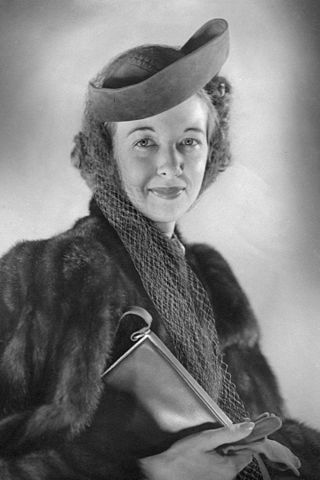
The University of Nebraska–Lincoln is a public land-grant research university in Lincoln, Nebraska, United States. Chartered in 1869 by the Nebraska Legislature as part of the Morrill Act of 1862, the school was the University of Nebraska until 1968, when it absorbed the Municipal University of Omaha to form the University of Nebraska system. It is the state's oldest university and the flagship institution of the state-wide system. The university has been governed by the Board of Regents since 1871, whose members are elected by district to six-year terms.

The Joslyn Art Museum, commonly referred to as the Joslyn, is a fine arts museum in Omaha, Nebraska, the largest in the state. It opened in 1931 at the initiative of Sarah H. Joslyn, in memory of her husband, businessman George A. Joslyn. Since its opening, the museum has gone through several expansions, the last of which was completed in 2024. It is the only museum in Nebraska with a comprehensive permanent collection, comprising over 12,000 objects, including nineteenth and twentieth-century collections of American and European art, Western American Art, Chinese and Japanese art, as well as contemporary art. The Joslyn is home to the Margre H. Durham Center for Western Studies, established in 1980, which stewards two of the most important collections of works by Western artists Karl Bodmer and Alfred Jacob Miller in the country.

The University of Nebraska State Museum, also known as Morrill Hall, founded in 1871, is a natural history museum featuring Nebraska biodiversity, paleontology, and cultural diversity, located on the University of Nebraska–Lincoln City Campus near the corner of 14th and Vine Streets in Lincoln, Nebraska, United States. The museum houses Mueller Planetarium, a hands-on science discovery center, and the Elephant Hall, where visitors can see the world's largest articulated fossil mammoth among the collection of fossil elephants. Also featured are interactive paleontology exhibits, a dinosaur gallery, ancient life and evolution exhibits, wildlife dioramas, gems and minerals, American Indian and African exhibits, and a temporary exhibit gallery featuring rotating displays on diverse topics including photography, quilts and fine arts.
The Hixson–Lied College of Fine and Performing Arts is the fine and performing arts college at the University of Nebraska–Lincoln (NU) in Lincoln, Nebraska. The college was established on July 1, 1993 as the College of Fine and Performing Arts, combining arts-focused programs from across the university. It was renamed in 2000 after receiving an $18 million donation from Christina Hixson and Lied Foundation Trust. Most of the college's facilities are located in the southwest corner of NU's City Campus in what is sometimes referred to as the "Arts Quadrangle." Andy Belser has served as dean of the college since 2022.

The International Quilt Museum at the University of Nebraska–Lincoln in Lincoln, Nebraska, is the home of the largest known public collection of quilts in the world. Formerly known as the International Quilt Study Center and Museum, the current facility opened in 2008.
Michael Francis James is an American artist, educator, author, and lecturer. He is best known as a leader of the art quilt movement that began in the 1970s. He currently lives and maintains a studio in Lincoln, Nebraska.

Lincoln, Nebraska is the home of the state capitol of Nebraska, the University of Nebraska and has history dating back to the mid 1800s. A list of tourist attractions that can be found within the city are as follows.
Hazen and Robinson was an architecture firm that practiced in Lincoln, Nebraska, from 1947 to 1967. N. Bruce Hazen and Marvin Robinson were the two principle architects and founders of the firm. Together they created buildings that till this day shape the landscape of downtown Lincoln Nebraska, the Nebraska State Capitol, and the University of Nebraska-Lincoln, one of the largest universities in the American Midwest. Additionally, they did many historic home districts in Lincoln. The firms’ modernist approach to design was reflected in their design. This is most noticeable in their partnership with Philip Johnson on the Sheldon Art Gallery, and other buildings including Kimball Recital Hall, Westbrook Music Building and Pershing Auditorium.

Kady Faulkner (1901–1977) was an American muralist, painter and art instructor who gained recognition in the middle of the 20th century. Her works are in the permanent collections of the Smithsonian American Art Museum, the Pennsylvania Academy of the Fine Arts, and the Great Plains Art Museum, as well as others. She was selected to work on the United States post office murals project of the U.S. Treasury during the New Deal and completed a mural for the Valentine, Nebraska post office. A mosaic by Faulkner in Kenosha, Wisconsin adorns the former bakery on the Kemper Hall grounds. She was an associate professor of Art at the University of Nebraska–Lincoln between 1930 and 1950 and then instructed headed the Art Department at Kemper Hall until her retirement.

Eloise Andrews Kruger was an American miniature collector from Lincoln, Nebraska, who was known for her collection of historically-accurate American miniatures.

Carol Haerer (1933-2002) was an American artist known for abstract painting in the vein of Minimalism and Lyrical abstraction.

Floating Figure is a 1927 sculpture by Gaston Lachaise.
Anna E. Reid Hall (1857–1928) was an American artist and art collector. She was the organizer of the first private art classes west of Omaha, Nebraska; was a co-founder of the Haydon Art Club, Lincoln's first arts organization, and its successor, the Nebraska Art Association; a painter of oil and watercolor still lifes, landscapes, and figures; exhibitor with the Haydon Art Club; and advocate and benefactor of Sarah Moore in 1884 as the first art teacher at the University of Nebraska-Lincoln.
Aaron Gunn Pyle was an American painter known for his contributions to Regionalist painting. His work is closely tied to the Midwestern United States, the region where he was born and spent most of his life.
Leonard Thiessen was an artist from Omaha, Nebraska, best known for his work as the first art critic for the Omaha World-Herald and for his contributions to Nebraska arts administration. He was the first Executive Director of the Nebraska Arts Council and encouraged the establishment of Nebraska art collections and museums. Thiessen worked in painting, design, printmaking, and mural making.
Keith Martin was an American abstract and surrealist painter and collagist during the 20th century. His paintings are in a multitude of art museums and collections, including the Smithsonian American Art Museum, The National Gallery of Art, and the Museum of Modern Art.

Alice Righter Edmiston (1874-1964) was an American painter and printmaker who taught at universities and contributed to various art organizations in Lincoln, Nebraska, and one in New York City. She has been described as an impressionist-influenced artist who followed modernist trends.
Charles Rain was an American magic realist painter during the 20th century.
The Haydon Art Club was founded in 1888 by Sara W. Moore. It was named after the British history painter, Benjamin Robert Haydon. The goals of the club was promotion of community within art clubs in and out of schools. It was the forerunner of the Nebraska Art Association.

Ellen Smith (1838–1903) was the first female faculty member to work as a professor at the University of Nebraska-Lincoln (UNL). Hired in 1877, she worked at UNL until 1902, almost until the day she died. During her time there, she was a professor of Greek and Latin and the Principal of the Latin School. Later during her tenure at UNL, she would work in the library and serve as the University Registrar from 1884-1902.

















